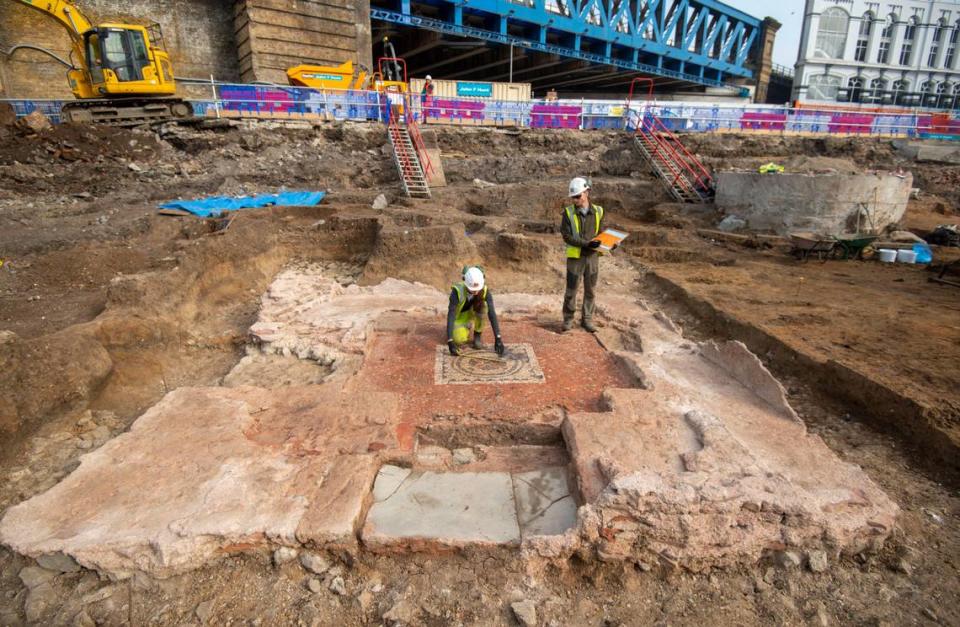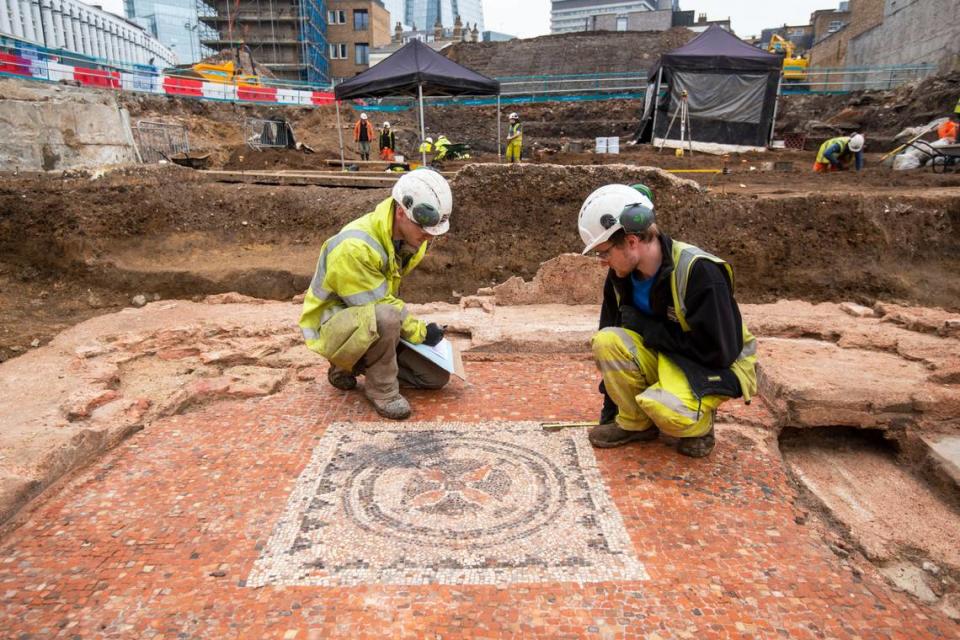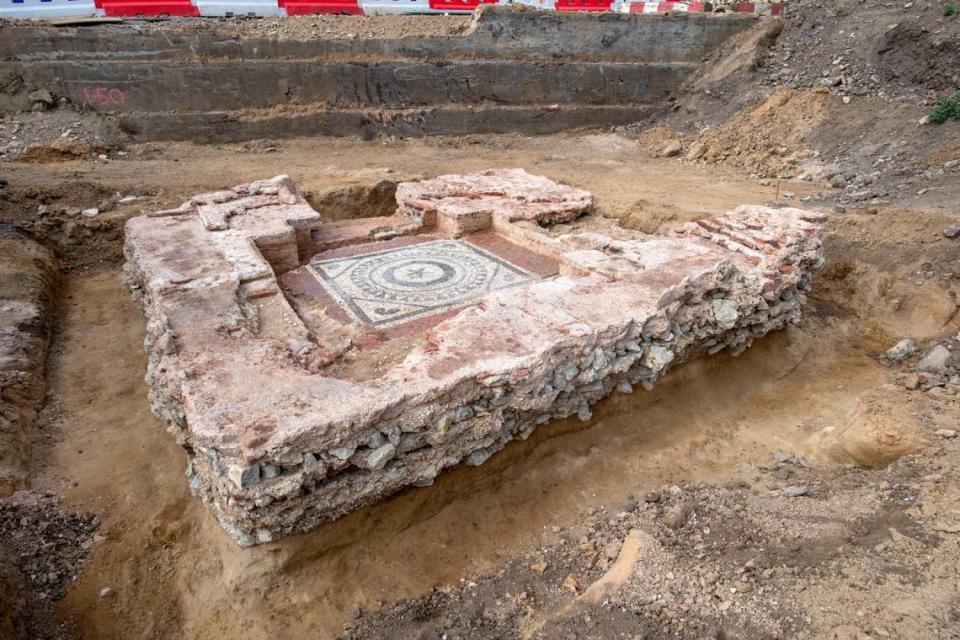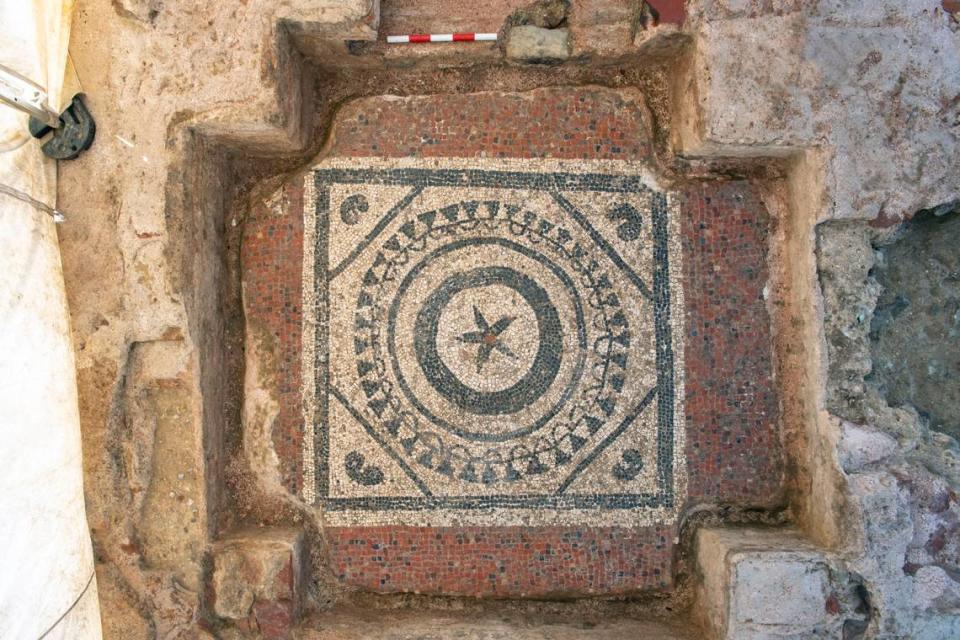‘Monumental’ ancient Roman tomb uncovered in London. See the ‘first of its kind’ ruins
Working amid modern skyscrapers and the iconic London Bridge, archaeologists dug in the reddish brown dirt at a construction site in the United Kingdom. To their amazement, a “monumental” structure began reemerging.
Archaeologists uncovered the ancient Roman ruins during excavations at Liberty of Southwark site in south London, the Museum of London Archaeology said in a June 13 news release shared with McClatchy News.
They initially unearthed a large, square structure with a central tile mosaic and remnants of slightly raised platforms, according to the release. Photos show the ruins soon after their initial rediscovery.
Archaeologists identified the ruins as an ancient Roman mausoleum, a “monumental tomb” where wealthy Romans were buried, the release said.


The mausoleum was a “first of its kind” and “completely unique” structure, experts said. When it was originally built, the “substantial” building likely had two floors, but it experienced “significant modifications” before being abandoned.
Beneath the first mosaic, archaeologists uncovered an older, lower mosaic, the release said. The stacked mosaics indicated the floor had been raised. Photos show the older mosaic.
Both “striking” mosaics had “similar” designs of “a central flower surrounded by a pattern of concentric circles,” archaeologists said. The central square designs were enclosed by a “pavement” of “small red tiles.”


Archaeologists found the ruins of walls, the entrance steps and “raised platform on which the burials were placed,” the release said.
The mausoleum’s walls were “almost completely dismantled, probably during the medieval period, for reuse elsewhere,” archaeologists said.
Still, the ruins are “the most intact Roman mausoleum ever to be discovered” in the U.K., the release said. Digital reconstructions showed what the interior of the mausoleum might have originally looked like.
No burials or coffins remained at the mausoleum, but excavations found over 80 ancient Roman graves in the surrounding area. In these areas, archaeologists found coins, metal pieces, roof tiles, pottery fragments, jewelry and a bone comb, the release said.
Antonietta Lerz, senior archaeologist with the Museum of London Archaeology, said the mausoleum “provides a fascinating window into the living conditions and lifestyle in this part of the city in the Roman period.”
Although prehistoric ruins have been found in London, the city’s history stems from the ancient Roman invasion and occupation of Britain which began in 43 A.D., according to Britannica. London, then known as Londinium, became the capital of Roman Britain and grew into a bustling commercial center.
The ancient Roman military withdrew from London in the fifth century, prompting “widespread abandonment of property,” according to Britannica. The 200 years that followed are a mystery but the city reemerged as a powerhouse by 597 A.D. under the control of the Saxons.
Officials will determine the exact age of the mausoleum, restore the ruins and put it on public display in the place they were found, the release said.
‘Countless’ offerings to ancient Greek god unearthed from island temple. Take a look
Unfinished projects sat in glassmaker’s workshop for over 1,700 years — until now
Archaeologists near Roman site stumble on more recent — and explosive — find in Spain


